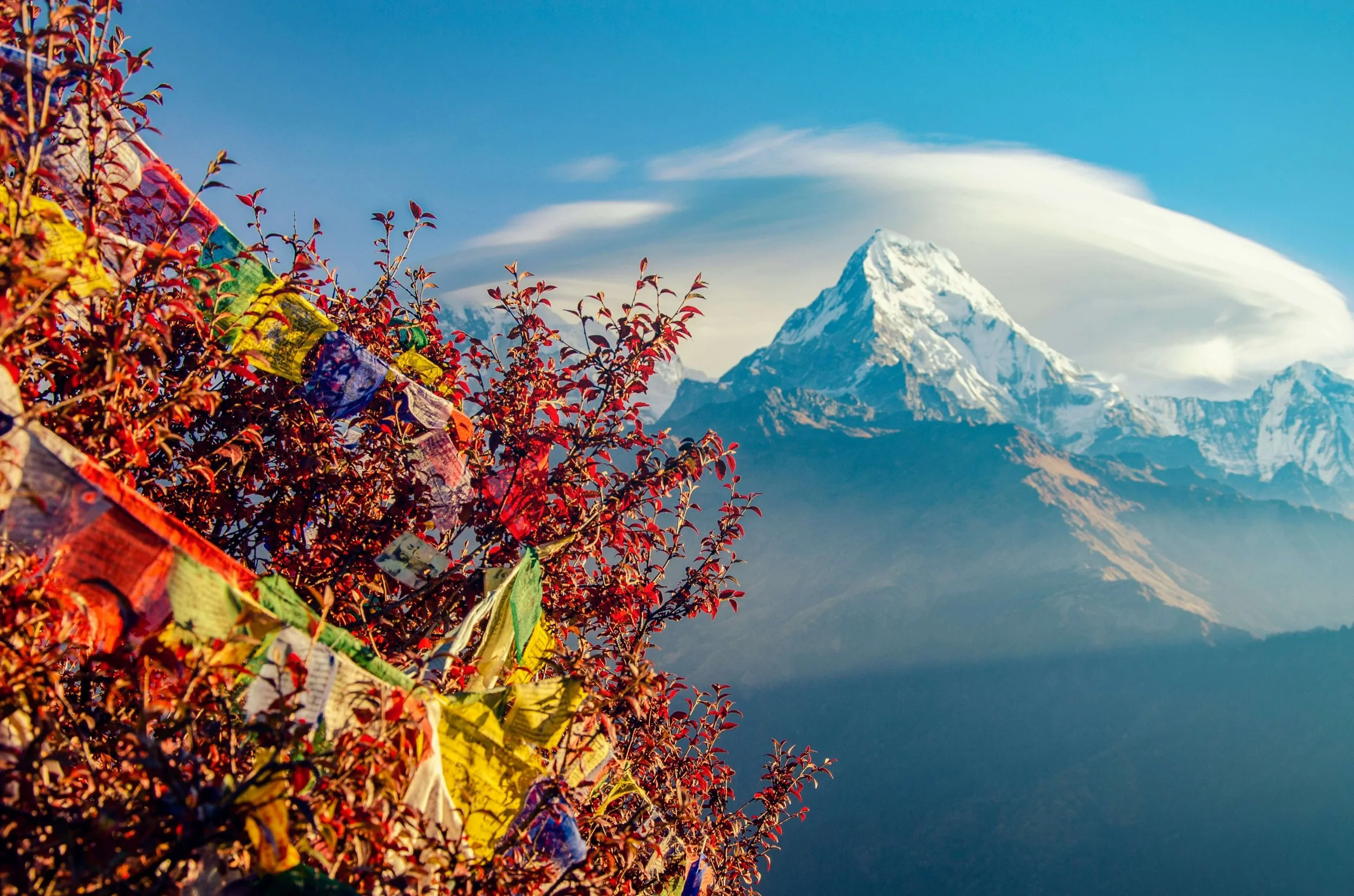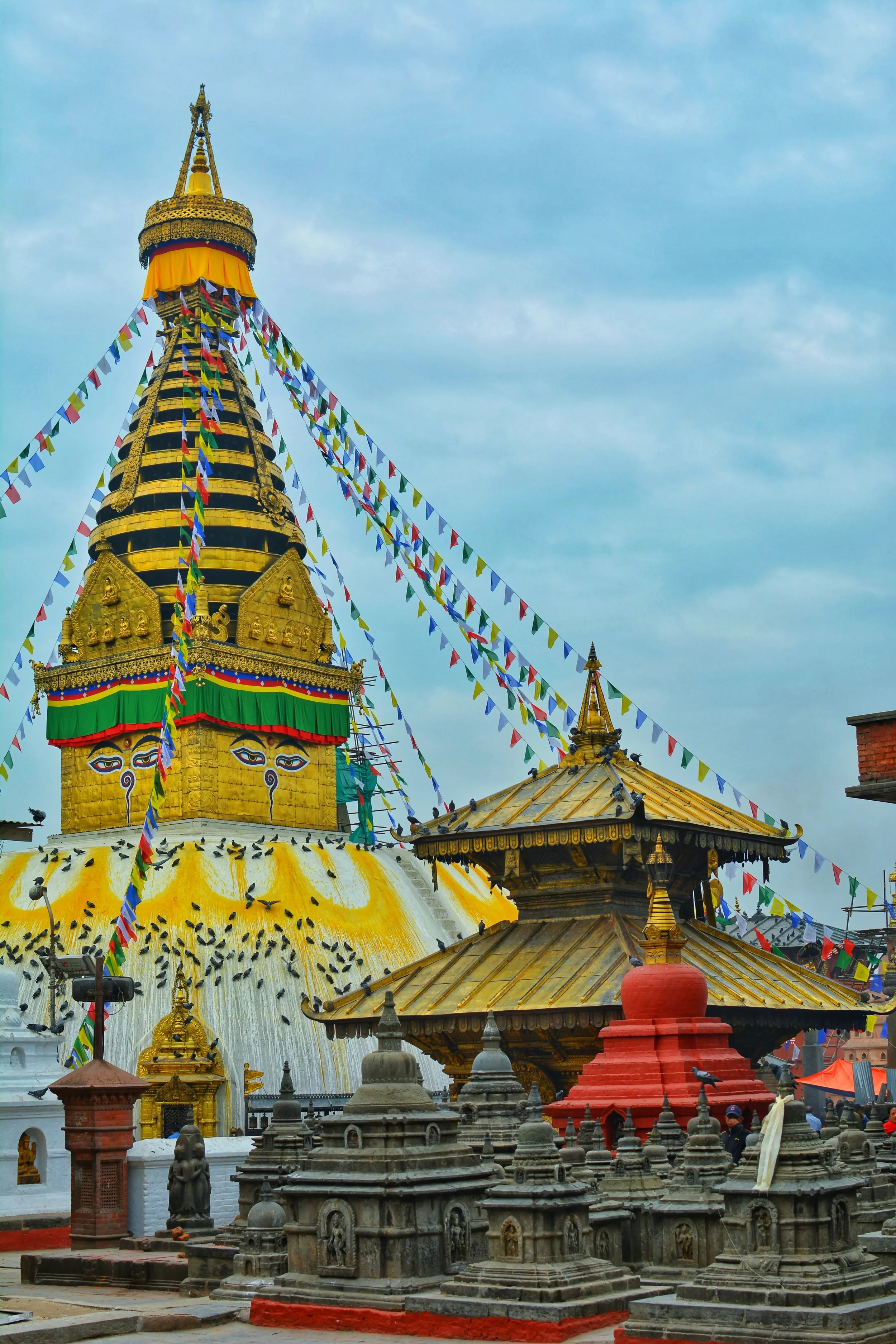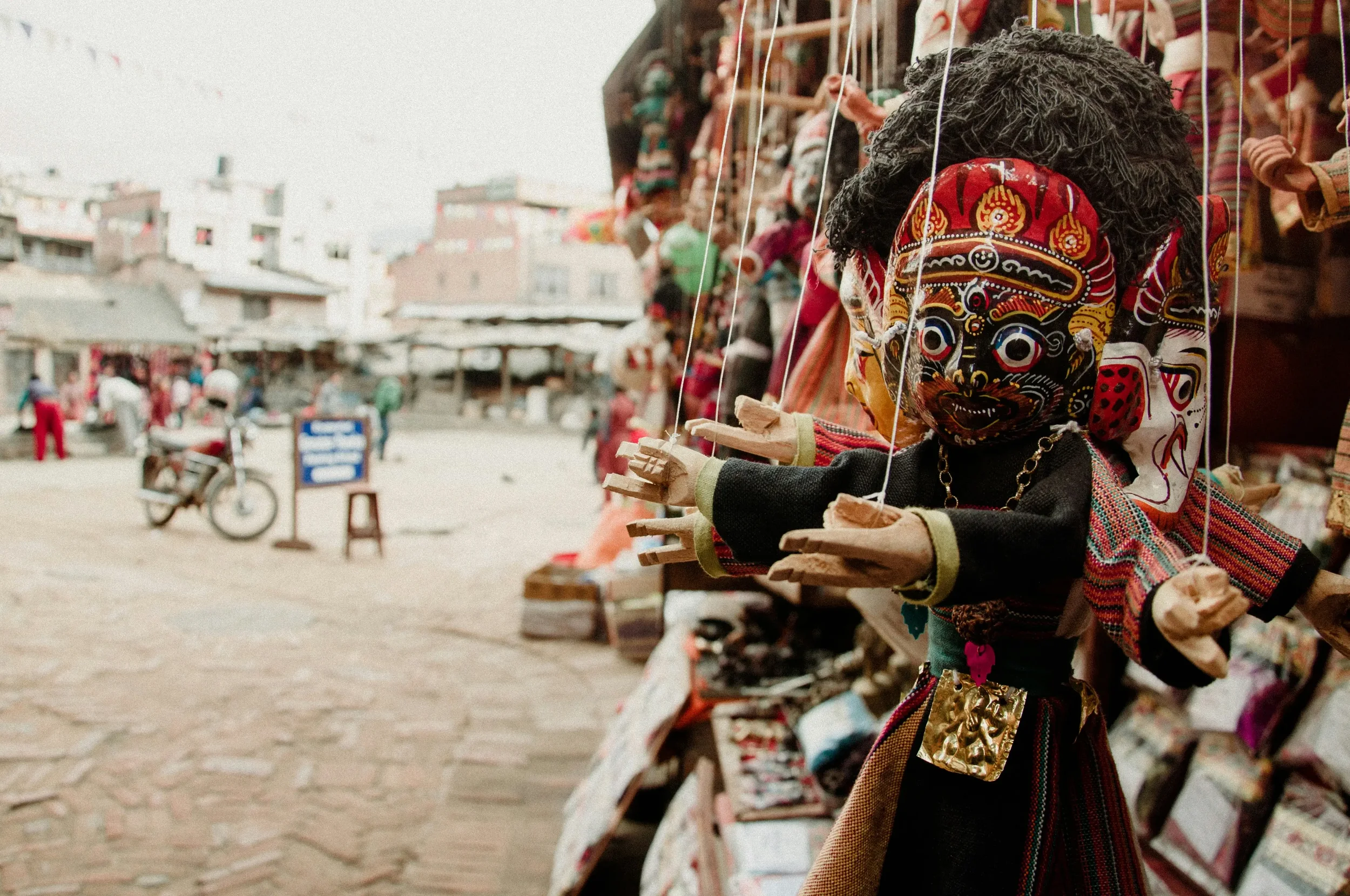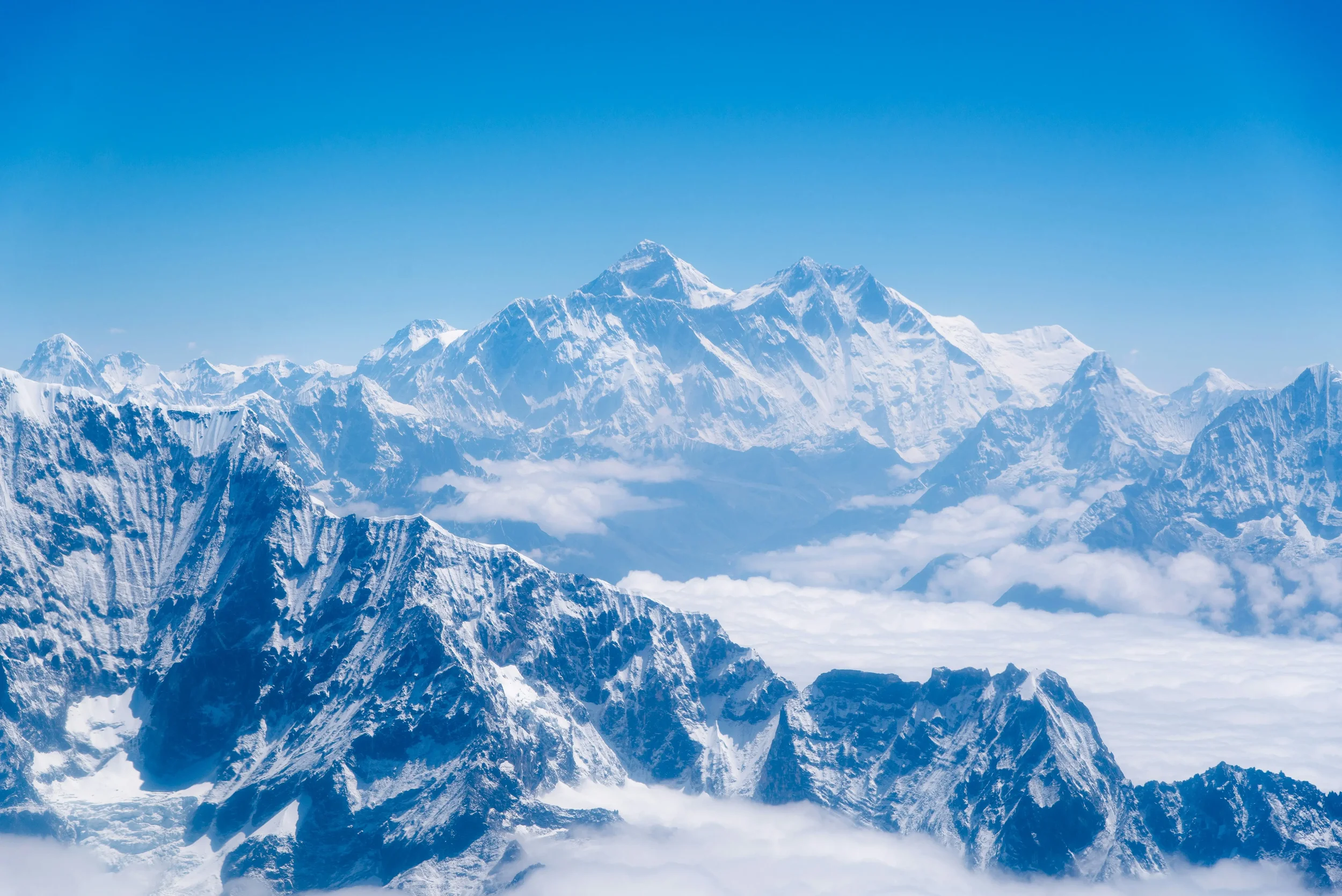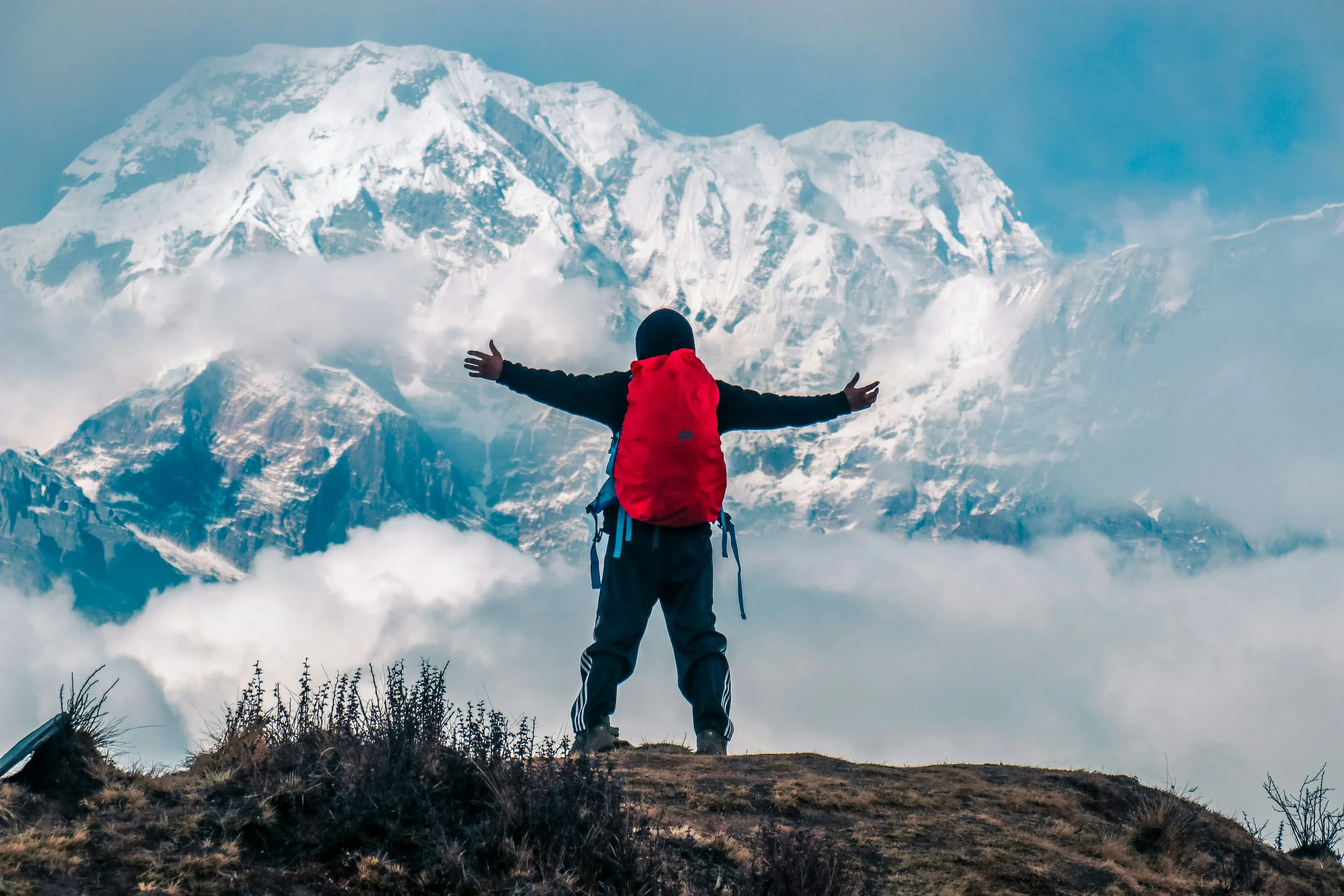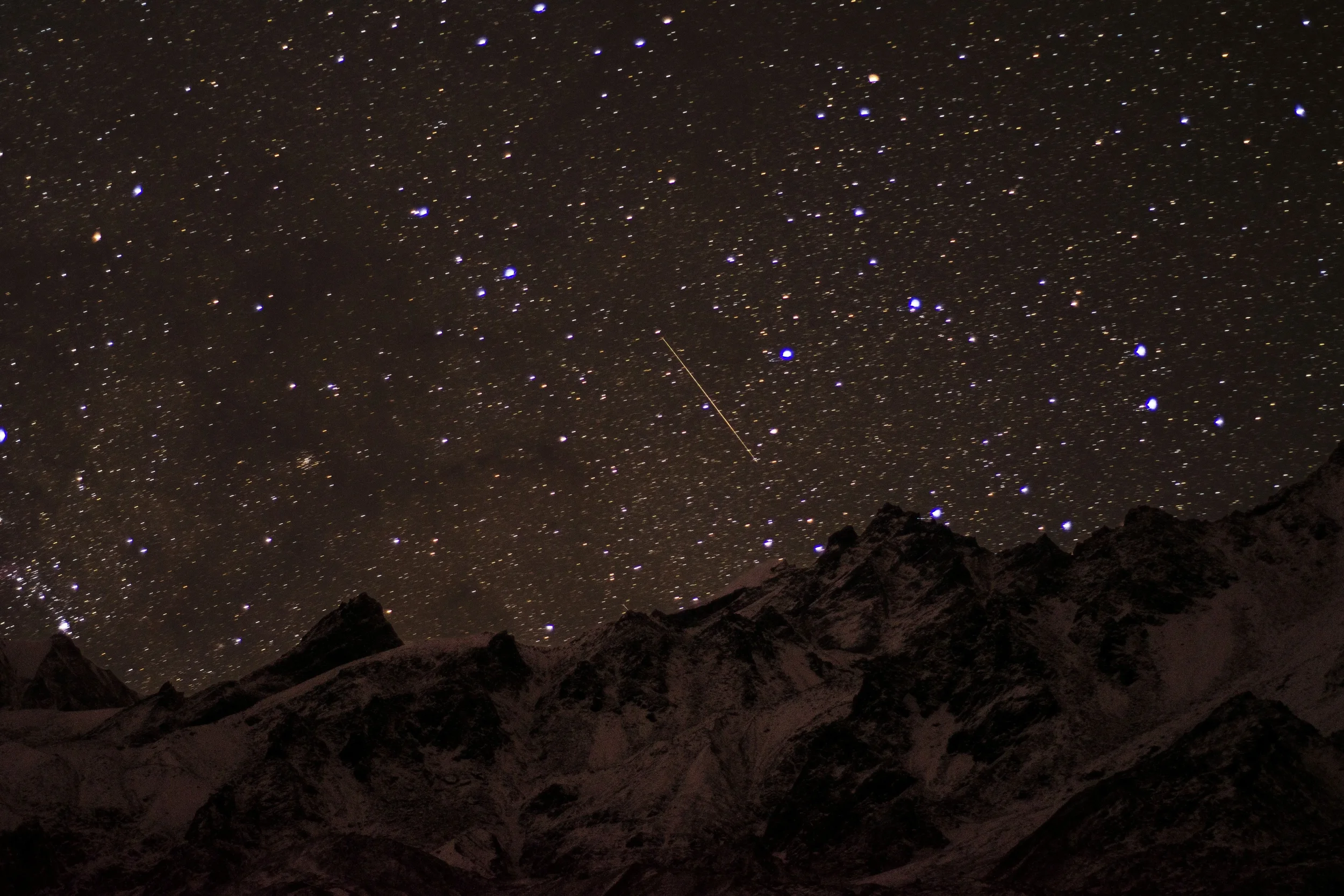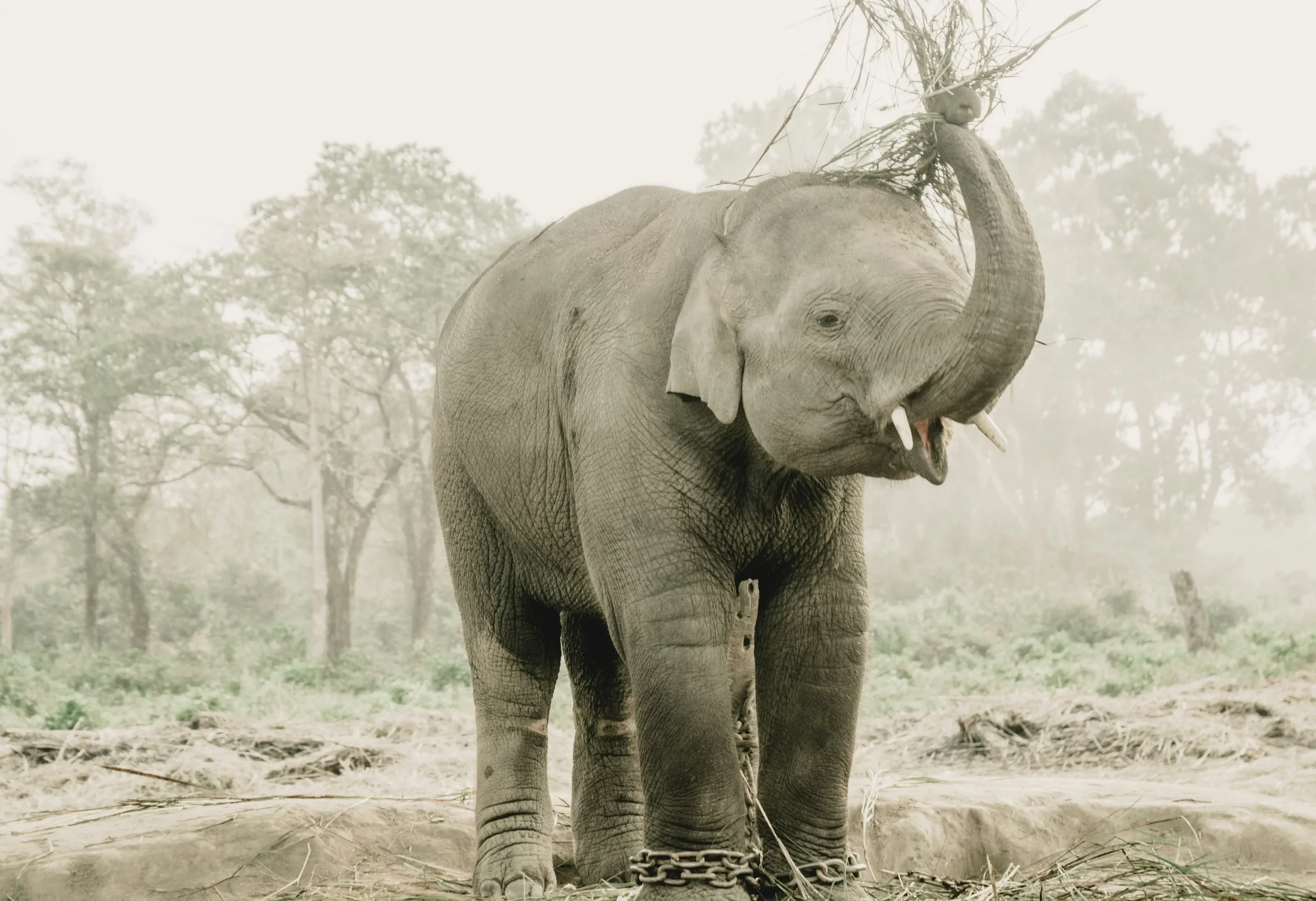NEPAL
-
Nestled in the heart of the Himalayas, Nepal is a spiritual and adventurous haven — a favorite among travelers seeking both inner peace and high-altitude thrills. Home to eight of the world's ten highest peaks, including Mount Everest, it is a trekking paradise.
Most journeys begin in Kathmandu, a colorful and chaotic capital where ancient temples, busy markets and sacred rituals blend into daily life. The surrounding Kathmandu Valley, with UNESCO World Heritage sites such as Durbar Square, Swayambhunath (Monkey Temple) and Boudhanath Stupa, provides a rich glimpse of Nepalese history and tradition.
From there, head to Pokhara, a laid-back lakeside city that serves as the gateway to the Annapurna region, and a hub for paragliding, boating and unwinding post-trek. For wildlife lovers, Chitwan National Park in the southern Terai lowlands features jungle safaris where you might spot rhinos, elephants and even Bengal tigers.
Whether you’re crossing a Himalayan pass, meditating in a mountainside monastery, or sipping tea with a view of the peaks, Nepal promises a profoundly transformative experience.
-
Nepal has a diverse climate due to its varied topography, ranging from subtropical in the south to alpine in the high Himalayas. The most popular times to visit align with the dry seasons.
Autumn (September - November): This is widely considered the best time to visit Nepal, especially for trekking.
Visibility: Crystal-clear skies offer spectacular, unobstructed views of the Himalayas.
Temperatures: Moderate and pleasant, ranging from 15°-25°C (59°-77°F) in lower altitudes and cooler at higher elevations.
Conditions: Stable weather, minimal rainfall, and dry, well-maintained trails. Perfect for major treks like Everest Base Camp or Annapurna Circuit.
Spring (March - May): The second-best time to visit, particularly for trekking.
Visibility: Good visibility, though some haze can develop towards late spring.
Flora: Rhododendrons and other wildflowers bloom, adding vibrant color to the landscapes.
Temperatures: Mild and comfortable, similar to autumn. Can get warmer towards May in lower regions.
Winter (December - February):
Temperatures: Cold, especially at higher altitudes where it can drop below freezing. Kathmandu can be chilly (0°-10°C / 32°-50°F).
Visibility: Generally clear skies.
Trails: Higher passes may be closed due to heavy snow; lower altitude treks (like Ghorepani Poon Hill) are still possible and offer fewer crowds. Best time for wildlife spotting in Chitwan.
Monsoon (June - August):
Temperatures: Warm and humid.
Visibility: Frequent cloud cover and rain, often reducing mountain views. Trails can be muddy, slippery, and prone to leeches and landslides.
Ideal for: Regions in the rain shadow of the Himalayas, such as Upper Mustang or Dolpo, which remain relatively dry. Otherwise, generally least favorable for trekking.
Important Tip: For trekking, autumn and spring offer the best combination of weather, views and trail conditions. Always pack layers due to significant temperature changes between day and night, and between altitudes.
-
UK, EU & US passport holders:
All foreign nationals (except Indian citizens) require a visa to enter Nepal. The most common and convenient options are:
Visa on Arrival (VOA): Available at Tribhuvan International Airport (Kathmandu) and at major land border crossings (e.g., Sunauli/Bhairahawa, Birgunj, Kakarbhitta).
Requirements for VOA:
Passport valid for at least 6 months from the date of entry.
At least one blank page in your passport for the visa.
One recent passport-sized photograph (take a few extras for trekking permits etc.).
VOA fee (payable in USD, EUR, GBP, AUD, CAD, CHF, JPY, SGD, HKD, RMB - exact cash highly recommended).
15-day Multiple Entry Tourist Visa: US$30
30-day Multiple Entry Tourist Visa: US$50
90-day Multiple Entry Tourist Visa: US$125
You can often fill out an online visa application form in advance (within 15 days of travel) via the Nepal Department of Immigration website (nepaliport.immigration.gov.np/online) to save time at the airport/border.
Visa from Nepali Embassy/Consulate: You can apply for a visa in advance from a Nepali embassy or consulate in your home country. This is recommended if you want to avoid queues or potential issues on arrival, or if you are from one of the few countries not eligible for VOA (check official Nepal Immigration website).
Extension: Tourist visas can be extended at the Department of Immigration offices in Kathmandu or Pokhara.
Cost: US$3 per day for extensions of more than 15 days (minimum 15 days extension is US$30).
Maximum Stay: A tourist visa can be extended for a maximum of 150 days in a single calendar year (January 1st to December 31st).
Other Important Notes:
Passport Validity: Passport must be valid for at least 6 months from the date of entry.
Onward Travel: While not always strictly enforced, having proof of onward travel (e.g., a return or exit ticket) is technically required and may be requested.
Overstay Fines: Overstays are fined daily (typically US$5 per day for the first month, increasing thereafter) and can lead to serious legal complications, including detention and deportation. Do NOT overstay your visa.
Trekking Permits: If you plan to trek in national parks or conservation areas (e.g., Annapurna, Everest, Langtang) you will need specific permits (TIMS card, national park entry fees). These can be obtained in Kathmandu or Pokhara, from the Nepal Tourism Board offices or through trekking agencies.
-
Currency: Nepali Rupee (NPR / रू)
Cash is widely used throughout Nepal, especially for small purchases, local transport, street food, and in remote areas. While cards are accepted in larger hotels, restaurants, and shops in Kathmandu and Pokhara, it is best to always carry sufficient cash.
Best way to access money:
ATMs: Available in major cities (Kathmandu, Pokhara, Chitwan) and some larger towns along trekking routes (e.g., Namche Bazaar).
Fees: ATMs in Nepal typically charge a fee per-transaction (around NPR 400-500, which is approx. US$3-4).
Withdrawal Limits: Limits are often low (e.g., NPR 10,000 - 35,000 / US$75-265 per transaction), meaning you might incur multiple fees for larger amounts.
Use a fee-free travel card (like Revolut, Wise, or Monzo) to minimize your home bank's foreign transaction fees and ATM charges.
Money Exchange: You can exchange major currencies (USD, EUR, GBP) at banks and licensed money changers in Kathmandu and Pokhara. Rates are generally better than at the airport.
Bring USD: It's useful to carry some clean US Dollars (small denominations) for visa fees on arrival and as an emergency backup. Indian Rupees (INR) are also widely accepted in some border areas, but 500 and 2000 INR notes are banned.
Typical daily backpacker budget: NPR 2,000 – 4,000/day (approx. US$15 – US$30 USD) – This budget should cover basic guesthouse accommodation (dorm or cheap private room), local food (dal bhat!), local buses, and a few activities. Trekking will significantly increase this budget due to permit fees, guide/porter costs (if applicable), and slightly higher food/accommodation prices on the trails.
Tips:
Bargain Politely: Bargaining is common in markets and for souvenirs. Do it with a smile.
Dal Bhat Power 24 Hour: Dal Bhat (lentil soup with rice and curry) is the national dish, found everywhere, and often comes with free refills on trekking routes – a great budget and energy booster!
Local Transport: Public buses are very cheap but can be slow, crowded and uncomfortable. Tourist buses between major cities are a better option.
Water Purification: Instead of constantly buying bottled water, use a water purification filter/bottle (e.g., Lifestraw, Sawyer) or purification tablets to save money and reduce plastic waste, especially on treks. Many guesthouses offer filtered water refills.
Tipping: Tipping is not mandatory but appreciated for good service (e.g., guides, porters, drivers, restaurant staff).
Learn Basic Phrases: Learning a few basic Nepali phrases like Namaste (hello/greeting) and Dhanyabad (thank you) will be greatly appreciated.
Sim Card: Getting a local Ncell or Nepal Telecom SIM card on arrival is cheap and useful for navigation and staying connected.
Main Destinations

